
A trusted source of Asia-Pacific commercial aviation news and analysis
Cover Story
Top of the world’s airport class
The world’s biggest airport megahub, Dubai, has made a remarkable recovery from the pandemic, well ahead of its rivals. How did it return to serious business so quickly? An optimistic Paul Griffiths, CEO of Dubai Airports Corporation, explains the strategy driving the airport group’s success to associate editor and chief correspondent, Tom Ballantyne.
For Dubai Airports Corporation, which operates the UAE’s two airport complexes, Dubai International Airport (DXB) and Dubai World Central (DWC), the onset of the pandemic was no different than it was for everyone. Read More » It was an absolute shock, the airport group’s CEO, Paul Griffiths, told Orient Aviation earlier this month. “We went from hero to zero in virtually no time at all. We were closed for 45 days. In May 2020, we had the same amount of passenger traffic through the airports in the month than we had in four hours in the previous May. It was just cataclysmically bad,” he said.
DXB and DWC closed to international passenger traffic on March 26, 2020, although the facilities continued cargo operations and flew more than 4,000 repatriation flights for around 450,000 passengers needing to return home, including UAE residents.
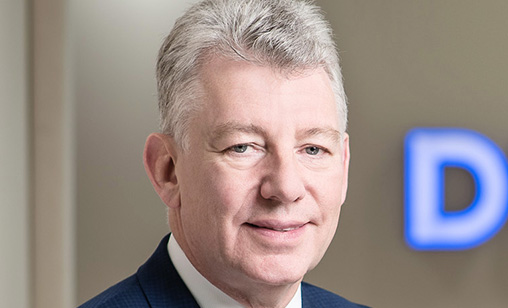 |
Restoration of scheduled operations was surprisingly quick. Emirates Airline restarted flights on June 21 and citizens were permitted to return to Dubai from June 22. Travel from Dubai to overseas destinations was opened from June 23 and international tourists were welcomed to the emirate from July 7.
DWC did not reopen until May this year, but it operated for a period to support the closure for refurbishment of one DXB runway. It will see action as it gears up for shuttle flights between Dubai and Doha for the FIFA World Cup in the final 10 days of November to December 18.
A little after two years of shutdown, “we have managed to achieve some amazing statistics,” Griffiths said. “At the moment, the only factor holding us back is that transit markets are negatively affected by closed border protocols.
“Obviously, we are missing a lot of the Chinese traffic because the borders are still closed there,” said Griffiths. The Chinese market is incredibly important, providing about 3% or 2.6 million passengers a year to Dubai. “It is a very significant number. It will help getting back to the Chinese market,” he said. “Asia in general has been slower than the rest of the world. But everything is really quite significantly better than it was.”
At press time, weekly passenger numbers through the emirate’s airport are around 1.34 million or 84% of 2019 levels. Direct demand, that is passengers flying into Dubai and not transiting, is about 94.2% of overall 2019 levels. Transfer passengers have climbed to 72.4% of three years ago. “Those [closed] borders are a challenge and not every airline has put the amount of pre-pandemic capacity back into the market,” Griffiths said.
‘We are hoping the transfer market will pick up. Our forecast for the year is 64.3 million passengers, about 85%-90% of pre-pandemic numbers. By the end of 2023, we will probably be back at overall pre-pandemic levels if those transfer markets continue to recover.”
Historically, Dubai’s traffic has been 50/50 and up to 60/40 in favour of transfers. Now it’s 60/40 in favour of direct traffic, which Griffiths describes as “an amazing turnaround and an amazing endorsement” of Dubai’s popularity.
Just how rapidly recovery is gathering pace was revealed in the airport’s latest official statistics. In the first half of 2022, to June 30, DXB traffic was 27.9 million passengers, up 161.9% year-on-year, or 67.5% of 2019 levels.
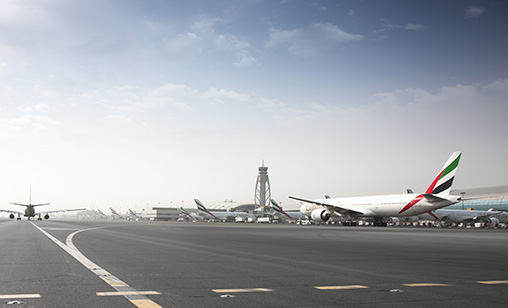 |
Interim passenger volume was near to full-year 2021 traffic at 29.1 million passengers. It is a milestone achieved despite a significant reduction in capacity from the 45-day closure of the airport’s northern runway in May-June. The annual passenger forecast for 2022 has been revised up to 64.2 million travellers, although it is still way short of the 86.4 million passengers the airports processed in 2019.
How did Dubai beat the rest of the airport world in turning disaster into opportunity? “We were making decisions and moving forward far quicker than anyone else,” Griffiths said. “For a start, the government embarked on a vaccination program for the entire country that was the most ambitious in the world.
“I think it was us and Israel that led the way on everyone in the country being vaccinated very, very quickly. Initially, we took fairly draconian measures to control the spread of the virus. We had curfews. We had mask wearing. We closed all restaurants. We did all of those things, but they were short and sharp, which was good.
“Within the airport we did masses of different stuff. We took immediate steps to protect our customers and our staff: PPE (personal protective equipment) and cleanliness of surfaces; initiatives to resolve problems and the perceptions people had about the transmissibility of the virus.”
A key factor in the turnaround was reassuring people that travelling to and through Dubai was safe. “We said we do this at Dubai. We have vaccination programs. We have PPE. We have all these things. We will cover your medical expenses if you come here and you get sick. We have really good medical care with a rapid PCR test for everyone.
“We set up the world’s largest PCR on site-testing laboratory to process the tests we had administered. I don’t think there was any other airport in the world that coped with the testing regime. We tested on arrival. We tested on departure. We had enough capacity to do that and contrary to everywhere else in the world, all of the arrivals testing was free.
“Where lots of people were bandits and charging US$150 to US$200 for a PCR test, we were offering them free of charge on arrival. These measures gave us a reputational boost. We have seen that because traffic to and from the city has come back stronger than ever before. We are at 111% of our pre-pandemic numbers in visitors to the city. It’s regarded as a safe haven now.”
The airport worked very closely with its airline customers, its suppliers and staff to cope with the crisis. “We had to acknowledge we were not alone. Everyone was together in this crisis,” Griffiths said.
Paul Griffiths is a maestro in more ways than one. Not only does he oversee the complex task of running the world’s biggest aviation megahub, he is an organist who has performed in venues around the world including Westminster Abbey and St. Paul’s Cathedral in London. In February 2019 he was at the organ’s keys in Abu Dhabi for the Papal Mass marking the visit of Pope Francis to the Arabian Peninsula, the first Roman Catholic pope to do so. It seems a long way from the 65-year-old’s other passion, fast cars. He collects motorcycles and cars and is a regular participant in motorsport events in the UAE and overseas. Griffiths has even driven a Lotus Formula 1 car around the Hungarian Grand Prix circuit. Organ playing and car racing? Not so far apart, Griffiths told Orient Aviation. “Basically, I think my life is full of adrenalin. The adrenalin of running a very complex airport. Having been on both sides of the track in the airline business and now in the airport business, the airport business is far more complicated than running an airline. I can tell you that,” he said. “So I think the complex job is based around adrenalin. And if you actually look at the music I play, that’s also full of adrenalin. Some of the repertoire I perform is quite demanding. “It needs a huge amount of energy and adrenalin as well. And my motor racing interests are similarly filled with adrenalin. That adrenalin is the common drug that joins them altogether.” Married to composer Joanne Marsh, the father of three told Orient Aviation he has four quadrants in his life: his hobbies, his professional life, his music and, most important of all, his family. “I’m happiest when the crosshairs of those four quadrants are exactly in the centre.” A confessed “transport junkie” and interested in “anything that moves” he has a restored Hawker Sidley GR1 Harrier (Jump Jet) which is on display at Brooklands Museum in the UK. “Restoring that jet fighter was one of the most rewarding things I have done. I did not do it personally, but the people I employed and the project I managed was just incredible,” he explained. Neither is there any thing hobby-like about his music. “I have an organ in my house in the UK and an organ in Dubai. I play concerts all over the world. I fixed a date yesterday for New York. I will be going to do that next April. I have, hopefully, a concert series in Australia and New Zealand I will try to fit in next year,” he said. Professionally, Griffiths entered the travel industry in 1977 as a contracts executive with the OSL/Wings travel group, which was owned by the Rank Organization. He moved to Hong Kong in 1986 and became Marketing Manager of the then start-up airline, Dragonair. In 1989, he returned to the UK and established a software company that developed proprietary information management systems for the airline industry. One of his contracts was with Virgin Atlantic. In 1991, Richard Branson asked him to join the airline as its executive director, commercial. In his ten years with Virgin, he was responsible for the strategic growth of the airline and many of its notable commercial successes, including the sale of 49% of Virgin Atlantic to Singapore Airlines in 2000. In 2001, he became a board director of the Virgin Rail Group. Three years later he joined BAA (British Airports Authority) and in 2005 became chairman and managing director of London’s Gatwick Airport. He was appointed by Sheikh Ahmed bin Saeed Al Maktoum as the first CEO of the new Dubai Airports Corporation in 2007. |
“We established a simple principle with our customers, our suppliers and our staff. It was “that we were not going to transfer the financial and social pain we are all suffering. We are not going to transfer it from us to you. Nor are we going to accept the transfer of pain from you to us. What we will do is work very hard and very diligently to share the pain with you’.”
Contracts with suppliers were renegotiated, removing nearly a billion Dirhams (around $272 million) from supply chain costs. “We have not put lots of those costs back in. They have been negotiated at the height of the crisis and we have retained the benefits from them which is really good,” he said.
“We quickly reached agreements with airlines to waive landing and parking charges, scaling the costs of the business so it was affordable and relevant to operations. With staff, the airport took a large majority of its customer service staff, cleaning staff and maintenance staff and agreed long-term contractual arrangements with third party contractors.
“Basically, we said to third party contractors take these people and put them onto a contract we can stretch out over a long period of time. Use the down time to train them and when the airport bounces back, which we knew it would, we want them back quickly and better trained.
“We did stand down some employees. We took the opportunity to scale back, particularly at management level. We did reduce quite dramatically – about 34% of our staff - but the large majority of them went to third party contractors.”
Griffiths said the structures the airport put in place during the crisis were a big risk. “We did not have all the data to make the rational decision, but we came to the point where we just had to make the decision and hope that it would have a good outcome.” he said.
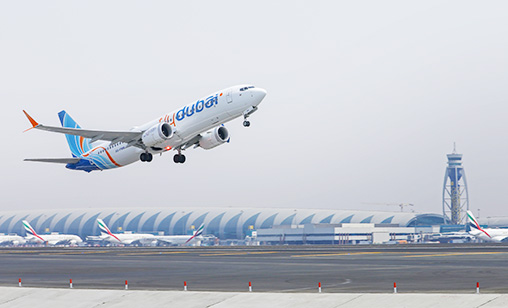 |
“I believe it has been a good outcome. We ended up in a situation where we could react quickly and with scale as soon as the recovery came. We knew it would be strong. We just did not know when it was going to happen.
“We had exactly the right structure to react appropriately when traffic did come back. We have had no resource problems, no shortages and no shortcomings in customer service. We have been able to reactivate the airport and take the operation back to scale incredibly fast. Compared with a lot of airports around the world, everyone was wondering how we did it. How did we manage it? It was because we structured the success in the future and managed the problem of the day.”
“Customer needs were changing. Staff needs were changing,” Griffiths said. “People needed reassurance they were not going to become ill if they travelled. Before, it was about Wi-Fi speed, the quality of duty free shopping and the price of the food at outlets,” he said.
“All of those disappeared. Number one, it become can you reassure me that travel rules, which were being revised all the time, will allow me to take this trip and return home safely as scheduled.
“Secondly, can you guarantee I will not get sick when I travel? It became all about that. So we were able to put the testing in place. We were able to reassure people Dubai was a safe, clean and medically safe city to visit. We made the travel journey as seamless as we possibly could. Recognizing customer needs had changed was absolutely fundamental to making everything else work effectively.”
“What have we learned from the crisis? Firstly, the hope that governments will work together to establish common standards for safe global travel is unlikely. I was highly sceptical of it from the word go and my scepticism was well-placed.”
“What we saw, and it was probably one of the most difficult issues of the entire pandemic, because it made the pandemic last a lot longer, were the ever-changing travel restrictions governments imposed on travel. Largely, they were not based on medical advice. They were whimsical political statements plucked out of the air, more to sustain fragile democratic majorities than to protect the travelling public and make travel possible again.
“That was the very lamentable realization quite early on that persisted pretty much all the way through the pandemic. The second lesson we learnt was a crisis always favours the bold, the innovative and people who see and do things differently.”
Griffiths dismisses suggestions from some quarters that video conferencing will replace flying and that new high technology aircraft, able to fly longer distances, will result in overflying Dubai rather than landing there. On the latter, he points out the same forecasts were made when the B747-400 was launched. “Everyone was thinking, ‘oh well that’s the end of the Middle East as a transport hub’. In fact, the Middle East then evolved its own aviation model, becoming a hub in its own right. We have been very adaptable at moving forward,” he said.
“I will paraphrase Newton’s third law: for every action there is an opposite and equal reaction. We knew for every downturn there was going to be an equal and opposite upturn. “I have been in this business long enough to know every crisis is followed by a pretty strong and immediate rebound. Travel is an aspirational commodity. Everyone loves to travel and I think it has become almost in Maslow’s hierarchy of needs (essentially what needs people have that take precedence over others) pretty close to the top now. In most people’s agenda the freedom to travel has become a phenomenon over the last 50 years that people can’t get enough of.” “People really missed it and they could not get enough of it when it became possible to travel again”. Dubai Airports CEO, Paul Griffiths |
Also, the view that point-to-point traffic on longer haul routes will displace the importance of hubs is not a logical extrapolation of route networks, Griffiths insists. “Let’s take a city pair out of the air. Chiang Mai to Nairobi. Could you ever imagine there would be enough people in Chiang Mai or Nairobi wanting to travel between those cities in a single hop? And even if this was so, what size airplane would you put up?” he asked.
“The answer is (a) demand would be small, and (b) you would never have enough traffic for the route to be sustainable or profitable. However, if you put people on a service from Chiang Mai to Singapore and from Singapore to Nairobi you can easily sustain a daily service because the number of connecting opportunities people arriving from Chiang Mai and people arriving from Nairobi would have through Singapore are considerable.
“The same applies to Dubai. If you offer it as a hub you can bring people to the hub and then disperse them to literally thousands of different unique city pairs never available on a point-to-point route.
“I just don’t buy the argument hubs are dead and point-to-point traffic will replace them. It’s never going to happen.”
As for the challenges ahead, Griffiths said if we could all move in lock step towards the same point, it would be easy. “Obviously, markets are recovering at different rates. The difficulty we have is some markets are slower to recover than others. We have the capacity and the aircraft to serve more markets than are commercially viable at the moment,” he said.
“The second issue is a worldwide shortage of cockpit and cabin crew. So many of them have left the industry and pursued new careers. Replacing them and recertifying aircraft that have been in storage are obviously big challenges. Actually, we have to look at this.”
Griffiths said many airlines and airports made huge cutbacks in staff during the pandemic and are struggling to remobilize. “If you look at BA (British Airways), Heathrow and some of the American carriers, their traffic has rebounded and demand is there. But they are having huge problems recovering their operations to satisfactory levels. It has been a real problem,” he said.
Carriers that were more resilient during the pandemic – he counts Emirates and FlyDubai among them – will fare better post-pandemic, he said. At press time, FlyDubai is operating at 144% of pre-COVID capacity.
“It shows how strongly they recovered from the pandemic. The competitive landscape has changed. We have to do more to reassure our customers about the quality of service we are providing. We have to make absolutely sure people want and choose to fly a combination of Emirates and FlyDubai and use our airports rather than going through Istanbul, Doha, Abu Dhabi, Frankfurt or other places.
“We have to offer them an end-to-end journey so compelling that people will only want to fly with us and people will continue to want to use the service we provide.”
While the pandemic held back growth at Dubai’s airports, Griffiths is confident about their potential because planning for expansion has begun. “In fact, I have a proposal on the table for the consideration of our board by our chairman. It advocates significant investment in aviation infrastructure in the next few years planned to get us to the traffic numbers we were seeing originally,” he said.
“Of course, it is dependent on lots of other factors: growth in aviation based on global GDP, the availability of aircraft necessary to support that level of growth and our ability to provide the appropriate airport infrastructure to support it.
“There are many things that will have an impact [on Dubai airports] in the next few years. But we remain optimistic. Maybe it will not be at quite the scale we saw [pre-COVID], nonetheless you can rely on Dubai being a very influential and pre-eminent global hub for some considerable period of time.”
Response(s). Share your ideas.
Charles Coffey says:
October 31st 2025 04:14am
Charles Coffey says:
October 30th 2025 01:15pm
Charles Coffey says:
October 30th 2025 01:15pm
Nicolette Elliot says:
October 21st 2025 01:37am
Denzel Chau says:
October 16th 2025 12:04am
Patricia Jackson says:
July 21st 2025 07:03am
elizabeth trafford says:
June 22nd 2025 11:06am
Oliver James says:
June 20th 2025 11:56pm
Nora Jackson says:
June 20th 2025 10:13pm
Mignon Wright says:
June 14th 2025 07:27am
Amelia Oliver says:
May 12th 2025 04:08pm
Emma Noah says:
May 12th 2025 04:06pm
Olivia Liam says:
May 12th 2025 04:01pm
Natasha Thompson says:
May 12th 2025 12:00pm
grace landon says:
May 2nd 2025 12:21pm
grace landon says:
May 2nd 2025 12:20pm
Daniel Harris says:
April 30th 2025 01:33pm
emily faye says:
April 17th 2025 10:56am
Michael Weirsky says:
April 14th 2025 11:14pm
grace landon says:
April 2nd 2025 05:31pm
grace landon says:
April 2nd 2025 05:30pm
grace landon says:
March 31st 2025 08:37pm
grace landon says:
March 29th 2025 02:43pm
grace landon says:
March 29th 2025 02:43pm
Jennifer says:
March 29th 2025 08:59am
grace landon says:
March 20th 2025 08:41pm
grace landon says:
March 20th 2025 08:41pm
grace landon says:
March 20th 2025 08:36pm
grace landon says:
March 20th 2025 08:35pm
Anthony says:
March 13th 2025 07:05pm
Dr. Ayo Christopher says:
March 1st 2025 02:11pm
Cheng Kurt says:
February 25th 2025 07:17am
scott gurney says:
February 20th 2025 02:06pm
scott gurney says:
February 20th 2025 02:05pm
Stacy Rogers says:
February 8th 2025 11:18am
John Lakehead says:
February 8th 2025 08:41am
brad duke says:
January 30th 2025 09:05am
brad duke says:
January 30th 2025 09:05am
Cheng Charlie Saephan says:
January 28th 2025 09:08am
Mery oguntuase says:
January 23rd 2025 09:36am
Michael Dav says:
December 9th 2024 10:21pm
Lisa oney says:
November 26th 2024 11:20pm
Jessica Colbert says:
November 25th 2024 11:14pm
mitchel dyck says:
November 21st 2024 11:47am
mitchel dyck says:
November 21st 2024 11:47am
mitchel dyck says:
November 14th 2024 01:30pm
mitchel dyck says:
November 14th 2024 01:30pm
Cheng Charlie Saephan says:
November 13th 2024 07:21am
Mary Robinson says:
November 11th 2024 05:28pm
Mary Robinson says:
November 11th 2024 05:27pm
mitchel dyck says:
November 3rd 2024 12:59pm
mitchel dyck says:
November 3rd 2024 12:59pm
Cheng Charlie Saephan says:
October 30th 2024 07:05am
Steng Armitage says:
October 10th 2024 05:29am
mitchel dyck says:
October 5th 2024 06:41am
mitchel dyck says:
October 5th 2024 06:40am
Dr. Ayo Christopher says:
October 1st 2024 05:06pm
mitchel dyck says:
September 30th 2024 04:53pm
mitchel dyck says:
September 30th 2024 04:53pm
Emily Naomi says:
September 26th 2024 01:48pm
Paul Becker says:
September 11th 2024 04:13am
Vultrogotha Günter says:
September 10th 2024 05:58pm
Herston Detty says:
August 31st 2024 09:50am
MONICA says:
August 30th 2024 12:44pm
AMELIA says:
August 28th 2024 01:11pm
WendyJoel says:
August 28th 2024 04:11am
Cheng kurt says:
August 27th 2024 02:50pm
ANABELLA says:
August 24th 2024 03:13am
ANABELLA says:
August 24th 2024 03:13am
KAROL LAHM says:
August 20th 2024 08:50pm
KAROL LAHM says:
August 20th 2024 08:50pm
KAROL LAHM says:
August 20th 2024 08:50pm
Mariam Wilson says:
August 17th 2024 01:33am
Alan Sevillo says:
August 12th 2024 04:40pm
Alan Sevillo says:
August 12th 2024 04:40pm
Maria Schaeffler says:
August 3rd 2024 10:54pm
Maria Schaeffler says:
August 3rd 2024 10:53pm
Abigail Kelly says:
August 1st 2024 04:25pm
Molly says:
July 30th 2024 06:16am
Niki nicole says:
July 27th 2024 04:11pm
Niki nicole says:
July 27th 2024 04:11pm
Anita Wolverine says:
July 26th 2024 07:46pm
Anita Wolverine says:
July 26th 2024 07:45pm
Maria Schaeffler says:
July 26th 2024 12:52am
Maria Schaeffler says:
July 26th 2024 12:52am
Niki nicole says:
July 22nd 2024 11:07am
wayne murray says:
July 21st 2024 11:24am
wayne murray says:
July 21st 2024 11:24am
Niki nicole says:
July 20th 2024 02:02pm
Niki nicole says:
July 19th 2024 04:32pm
Niki nicole says:
July 19th 2024 04:31pm
cindy says:
July 12th 2024 01:11am
cindy says:
July 11th 2024 11:33pm
cindy says:
July 11th 2024 11:06pm
cindy says:
July 11th 2024 11:06pm
cindy poole says:
July 11th 2024 02:03am
Deacon Mark says:
July 10th 2024 12:19pm
Danielle Russell says:
July 9th 2024 09:47pm
Anderson Gate says:
July 8th 2024 08:43pm
Alexander Liam says:
July 8th 2024 11:07am
ambrose says:
July 5th 2024 08:23am
Regina says:
June 29th 2024 12:16pm
RUTH MARIS says:
June 26th 2024 06:26am
Grace says:
June 22nd 2024 10:59pm
Emily Faye says:
June 21st 2024 11:09pm
Ruth maris says:
June 13th 2024 08:30am
momos smith says:
June 13th 2024 03:53am
momos smith says:
June 13th 2024 03:53am
momos smith says:
June 13th 2024 03:52am
rave harry says:
June 4th 2024 08:47am
rave harry says:
June 4th 2024 08:47am
Jenna leonard says:
May 29th 2024 08:40am
Georgieva Kristalina says:
May 21st 2024 11:25am
quatisha brown says:
May 21st 2024 09:39am
Nicolas Fernandez says:
April 30th 2024 11:03pm
juliana says:
April 23rd 2024 02:54pm
juliana says:
April 23rd 2024 02:53pm
Kelsey Zachow says:
April 20th 2024 05:01am
Kelsey Zachow says:
April 20th 2024 05:00am
james belich says:
April 19th 2024 09:47pm
Philip Morgan says:
April 18th 2024 01:20pm
james belich says:
April 14th 2024 12:42pm
james belich says:
April 11th 2024 01:09am
james belich says:
April 11th 2024 01:08am
Juliette Marie says:
March 30th 2024 11:58pm
Emily Faye says:
March 27th 2024 06:52pm
Albert Harry says:
March 24th 2024 08:09pm
Victoria Jones says:
March 22nd 2024 08:11pm
Victoria Jones says:
March 22nd 2024 08:11pm
Alejandro Henry says:
March 21st 2024 08:08pm
Henry Mark says:
March 20th 2024 06:33pm
Victoria Jones says:
February 24th 2024 03:34am
jamesbelich says:
February 23rd 2024 11:37pm
jamesbelich says:
February 23rd 2024 11:36pm
megan moroney says:
January 27th 2024 05:36pm
megan moroney says:
January 27th 2024 05:36pm
Victoria Jones says:
January 26th 2024 01:49am
Jude Ike says:
January 15th 2024 04:28pm
emily faye says:
December 2nd 2023 03:22am
Bills Sarah says:
November 21st 2023 10:20am
Shovel says:
November 20th 2023 06:22pm
Bobs Ernest says:
November 18th 2023 05:20pm
lufuno says:
November 1st 2023 03:07pm
Lattimore says:
September 29th 2023 03:38pm
Brenda Logan says:
September 25th 2023 02:38pm
Brenda Logan says:
September 25th 2023 02:38pm
Morgan Taylor says:
June 5th 2023 11:05pm
David Yax says:
May 17th 2023 07:07pm
David Yax says:
May 17th 2023 07:07pm
Yong Kyonge Jinn says:
May 7th 2023 05:21pm
JENKINS COOPER says:
January 25th 2023 04:08pm
Pamela Cole says:
December 5th 2022 08:22pm
James Benson says:
November 27th 2022 10:42am
James Benson says:
November 27th 2022 10:35am
Karoline Thompson says:
November 19th 2022 12:31pm
JASMINE TOM says:
November 12th 2022 01:53am
Eric Stewart says:
November 5th 2022 03:35am
SPEAK YOUR MIND
Your email address will not be published. All fields are required.
© Orient Aviation Media Group. All Rights Reserved.
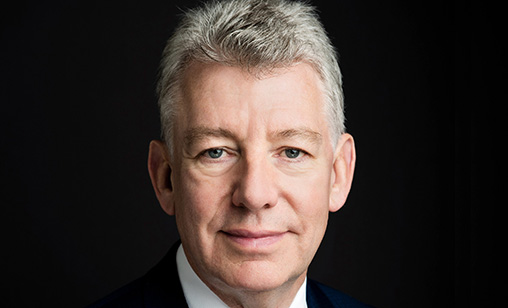
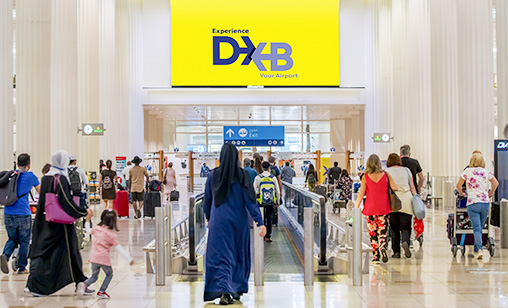
Charles Coffey says:
October 31st 2025 04:15am